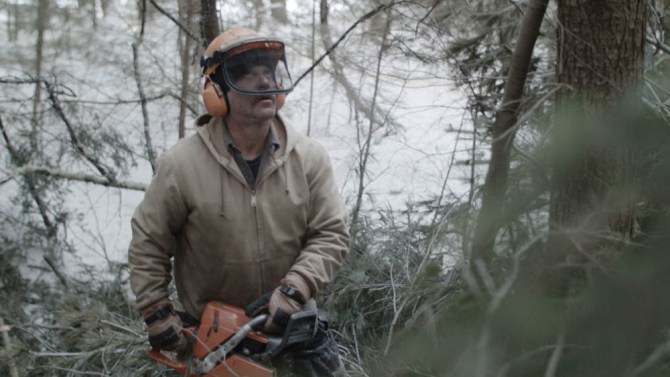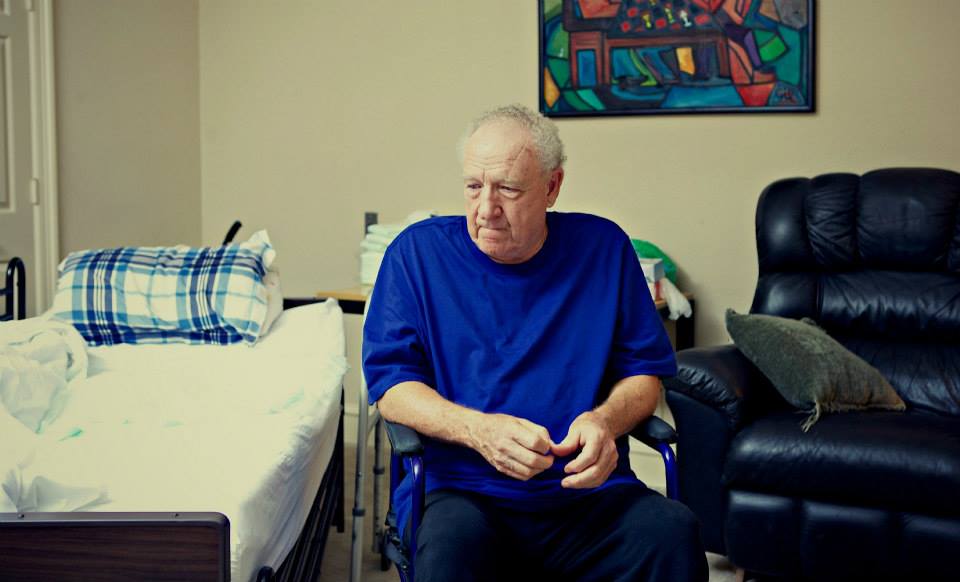By providing your information, you agree to our Terms of Use and our Privacy Policy. We use vendors that may also process your information to help provide our services. This site is protected by reCAPTCHA Enterprise and the Google Privacy Policy and Terms of Service apply.
Here’s How to Make a Fiction Film About Real-Life Characters

Paula Bernstein

We have grown accustomed to so-called hybrid documentaries which play with the notion of truth by, for instance, hiring actors to recreate childhood memories (“Stories We Tell”) or having subjects re-enact horrific real-life deeds (“The Act of Killing”). But more narrative filmmakers are incorporating real people who play variations of themselves in fiction films.
READ MORE: BendFilm Festival Announces 2015 Award Winners
At a recent panel at The BendFilm Festival, the directors of three such films, Todd Rohal (“Uncle Kent 2”), Diego Ongaro (“Bob and the Trees”) and Liz Cardenas Franke (“Treading Water“), discussed their development processes as well as the benefits and pitfalls of working in this creative form.
The advantage of fiction over documentary is that, unlike in real life, you can make things happen. In the cases of the films discussed, real people ended up as subjects of fiction films in various ways, and having a real person play a version of themselves added a level of authenticity as well as a layer of reflexivity.
“Uncle Kent 2,” for instance, “is a sequel to a movie that we knew no one had really seen,” explained Rohal. “Uncle Kent,” which was written by writer Kent Osborne (“Adventure Time”) and co-written and directed by Joe Swanberg, had Kent Osborne playing a version of himself. Rohal said that Osborne “had this idea to make a sequel because no one saw the first one.” But Swanberg wasn’t interested. “So we told this real story around Kent trying to make a sequel. So it’s really about him not making a movie that you’re watching. It implodes on itself.”
To intentionally confuse things even further, Swanberg appears in the film as himself (along with his real-life son, Jude) and actually directed the first 12 minutes of “Uncle Kent 2.”
 Rohal said that though “my favorite films are pretty much documentaries,” he doesn’t have a calling to make nonfiction films. “If you’re Errol Morris, weird things are happening in front of you every day, whereas I have to find those things and bring them in,” he explained.
Rohal said that though “my favorite films are pretty much documentaries,” he doesn’t have a calling to make nonfiction films. “If you’re Errol Morris, weird things are happening in front of you every day, whereas I have to find those things and bring them in,” he explained.
In “Uncle Kent 2,” Osborne plays a version of himself. “It drifted into more fiction as he went. He wanted to pull from real things, but I was pushing him so it would get more fictional as we went,” Rohal explained.
Other people played themselves in the film as well. “It was playing with multiple realities that nobody was aware of or cared about,” said Rohal. “The joke is built around the fact that you don’t know anybody.”
To make use of real-life situations, Rohal said they shot at ComicCon in San Diego where Osborne was speaking about “Adventure Time.” “There were like 3,000 people in a conference room,” Rohal said. “I didn’t know ‘Adventure Time’ had this huge fan base.” They were shooting a scene where Osborne’s character was having a mental breakdown during the panel and “nobody else knew we were filming, nobody at Cartoon Network. It was a little adrenaline-inducing.”
READ MORE: Here’s How These Two Female Filmmakers Made Their First Features
 For Franke’s film “Treading Water,” she said she started writing based on her own experience of taking care of her elderly father after her mother passed away from pancreatic cancer. “Through the course of taking care of my father, I met so many people from all walks of life, all different nationalities, all different ages, who were struggling with the same thing. So I made a short film in which the character is based on me and I played that character in the film.”
For Franke’s film “Treading Water,” she said she started writing based on her own experience of taking care of her elderly father after her mother passed away from pancreatic cancer. “Through the course of taking care of my father, I met so many people from all walks of life, all different nationalities, all different ages, who were struggling with the same thing. So I made a short film in which the character is based on me and I played that character in the film.”
Since she had no background in documentaries, Franke said, “It never occurred to me to look at this story from that perspective. Additionally, I wanted to take real life and then be able to dramatize it.”
Franke cast herself as the lead character, a variation of her real self. “I wasn’t necessarily expecting to be in it,” Franke explained. “When we were doing the casting, I cast all the other parts, but it was a situation where I felt I know it. I’ve lived it and I know it. I think it would serve the story best if I was in it as well. To me, the whole thing was although it is fictionalized, I wanted it to be really authentic.”
They shot the film in her father’s house surrounded by his actual hospital equipment. At one point they had to stop filming because her father wasn’t doing well.
In the case of “Bob and the Trees,” Ongaro was already close friends with Bob Tarasuk, a logger who lives in the same town as the director and would become the main character in the film. “It started growing in my head that I wanted to make a film with him. I had no idea what it would be. It’s a bit of documentary, but it’s fiction,” he said.
 He opted to go the fictional route because “ultimately, I like to control the story and know where it’s going.”
He opted to go the fictional route because “ultimately, I like to control the story and know where it’s going.”
Ongaro said he took inspiration from the films of the Dardennes Brothers, Lance Hammer’s “Ballast” and Samuel Collardey’s “The Apprentice.”
The real advantage of shooting a fictional feature as opposed to a documentary is the time involved. Unlike a documentary which would generally track Bob over a period of time, Ongaro said they shot the film in about three weeks. Also featured in the film are Bob’s son and business partner Matthew Gallagher and Bob’s wife Polly MacIntyre.
One of the challenges was to allow Bob to feel comfortable and not self-conscious on camera. “I literally love this guy. He is really charismatic,” said Ongaro. “But how can you get that result on camera? It was not easy because if you try to put sentences in his mouth, it is not going to work. He is who is he. He’s not an actor. He’s going to stress out if you give him lines.”
Ultimately, it was a collaborative process. “It was an ongoing conversation over many years with me and Bob. I would definitely feed on some of his life experiences,” said Ongaro. “As far as the storyline, I wanted to create that myself and when it came to everything that was his field of expertise, logging, farming. I would tell him, ‘this is what I need to do. How would you do it?’ As far as the arc of the character and the story, I brought the story to him and then we would talk it out or argue over some details.”
READ MORE: How These Two Female Filmmakers Made Their First Features
By providing your information, you agree to our Terms of Use and our Privacy Policy. We use vendors that may also process your information to help provide our services. This site is protected by reCAPTCHA Enterprise and the Google Privacy Policy and Terms of Service apply.

















